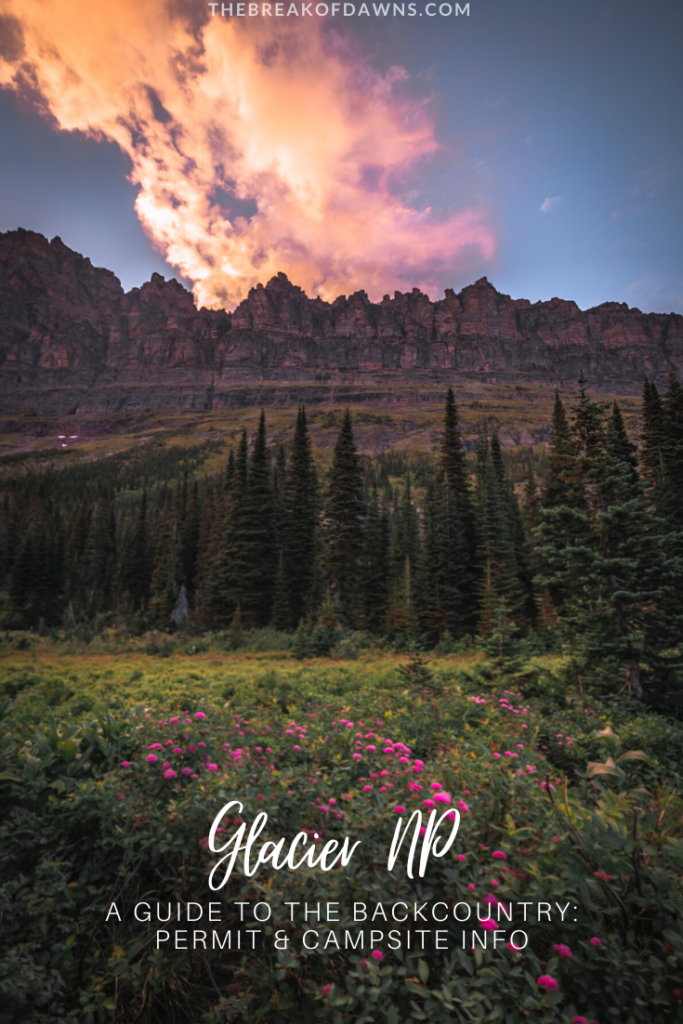
I recently spent a week exploring the backcountry of Glacier National Park in Montana and oh my, what a place. With cascading glacial façades and an inviting trail system that dives you deeper into the wilderness, it’s the ultimate place for backcountry exploring. While all backcountry sites require permits, the method to get one and the campsites themselves differ immensely from each park. That’s why I compiled this complete guide to the backcountry of Glacier National Park.
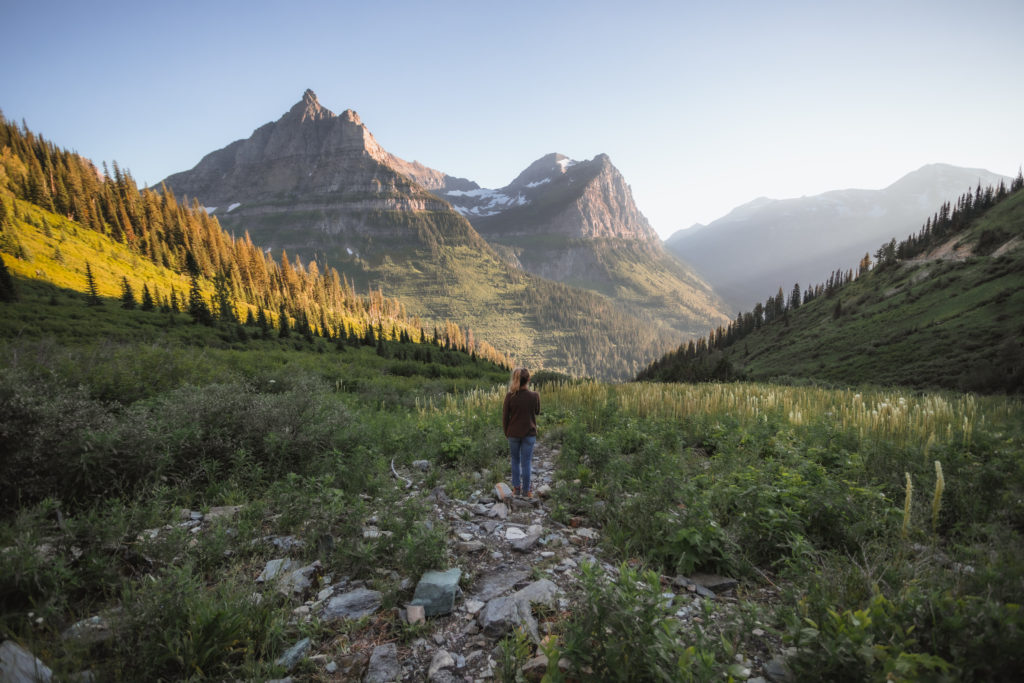
Definition of the Backcountry
You’re technically entering the backcountry any time you start walking on a trail outside of what’s accessible by vehicle. I like to think of the backcountry as the wildlife’s home and it is just that; an unpredictable, serene way to get in touch with nature. Because the backcountry does not belong to humans, different rules apply while you’re out there and the Leave No Trace guidelines spell those out for us.
Read More: Leave No Trace: The 7 Rules of the Backcountry
You can learn more about LNT and it’s mission on their website here.
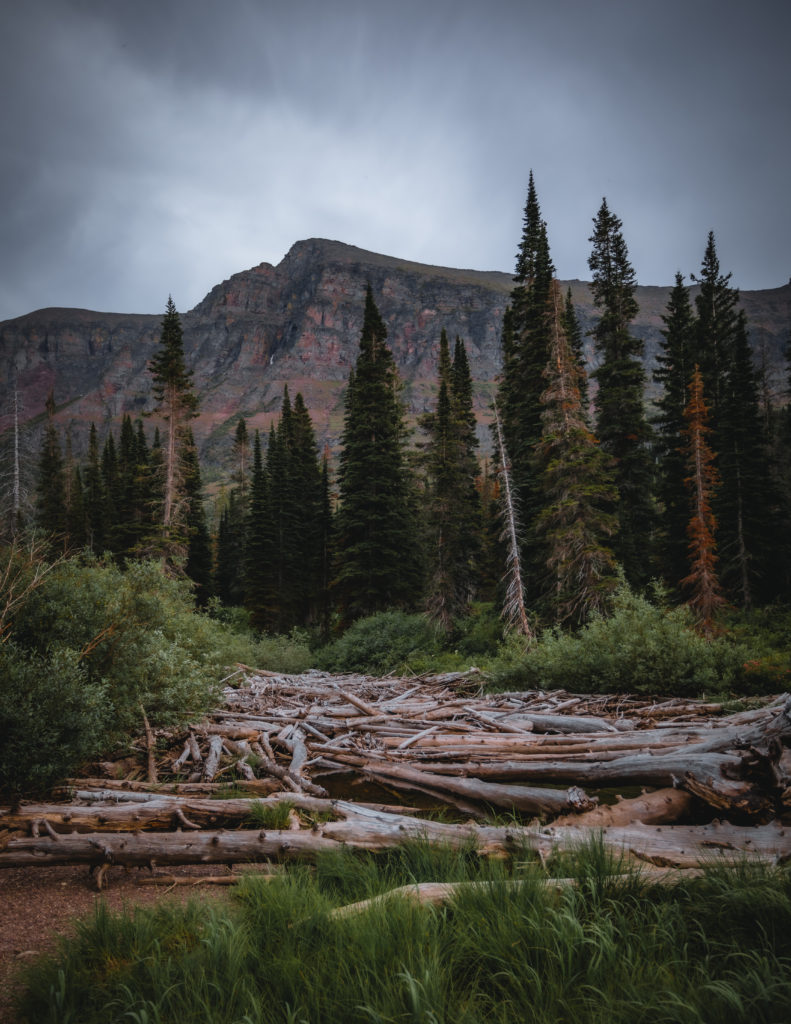
Obtaining Permits for the Backcountry of Glacier NP
Anytime you are planning to spend a night out in the backcountry you must get a permit from one of the park’s Ranger Stations. Permits are required for many reasons: to keep track of you for your safety, to minimize the impact on the land and resources, to limit the amount of people at a campsite and to offer you the best and safest experience possible while in the backcountry.
Backcountry permits in Glacier National Park from May to October are $7 per person, per night. November through April, backcountry permits are free. Only 2 tents and 4 persons are permitted at each backcountry sites and most only offer 3-4 sites per camp.
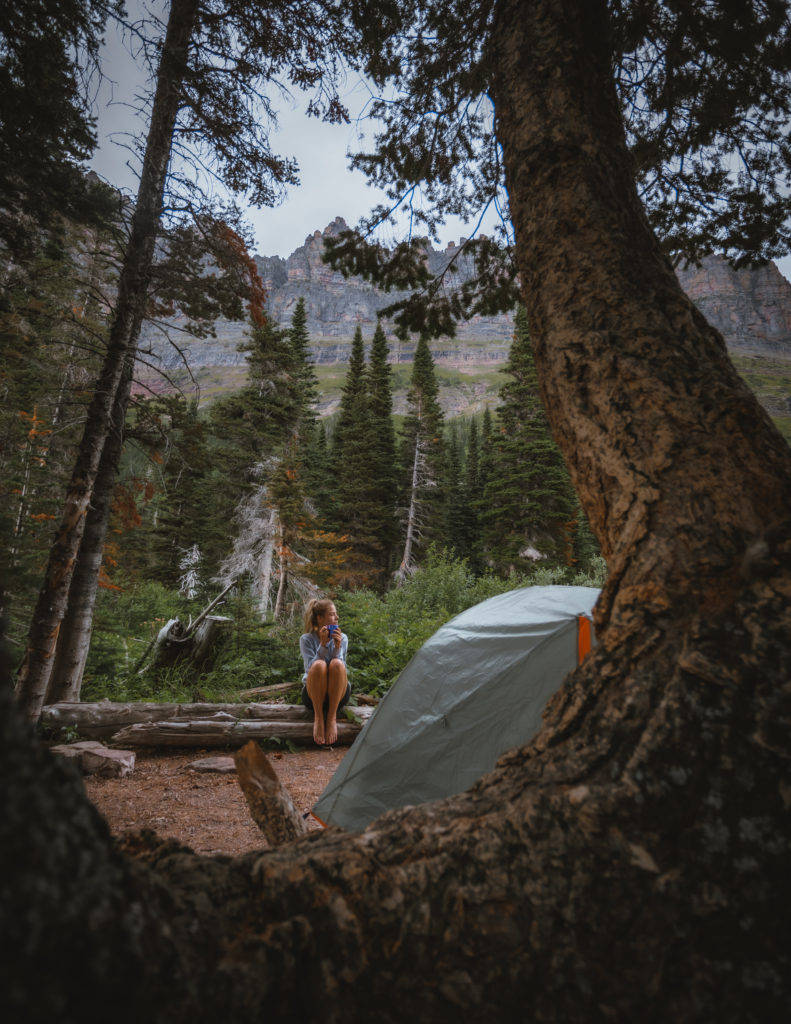
There are two ways to obtain a backcountry permit:
- Advance Reservations:
- Attempts to reserve a spot in Glacier’s backcountry using the “lottery system” begin March 15. Applications are online only here.
- For each application, there is a $40 fee. Of that amount, $30 is refunded if you aren’t granted your site request.
- After applying, expect a 2 month delay until you hear about the status of your permit.
- Pick up your permit at a Ranger Station prior to embarking on the backcountry trek. The backcountry camping fee of $7/person/night is due at this time.
- Walk-in Permits:
- About half of Glacier’s backcountry sites are reserved for walk-in permits only.
- You can only make a reservation for a backcountry trip the day of or day before embarking.
- The best sites go first so arrive to a ranger station early to get your permit. You can begin lining up at 4 a.m. and permits are no longer sold after 4:30 p.m.
- Pay the backcountry camping fee of $7/person/night.
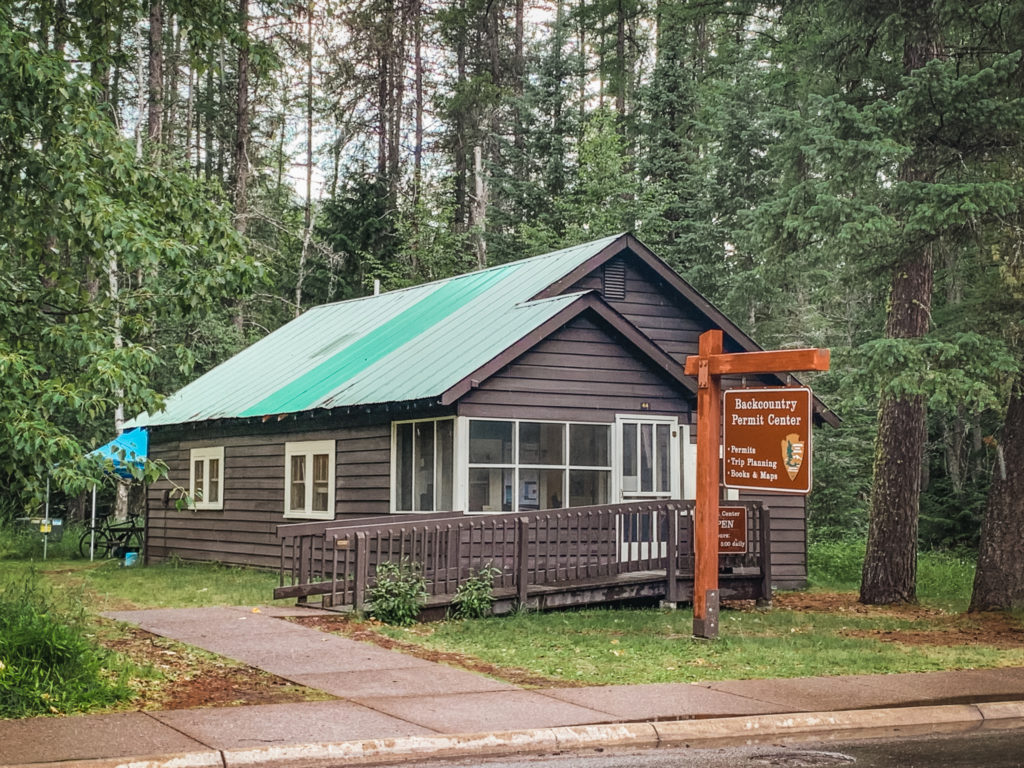
Ranger Stations in Glacier National Park:
- Apgar Backcountry Permit Center
- St. Mary Visitor Center
- Many Glacier Ranger Station
- Two Medicine Ranger Station
- Polebridge Ranger Station
- Waterton Lakes National Park Visitor Reception Centre
- If you’re planning to hike in the Waterton Lakes area (northern part of Glacier NP) then you will have more requirements for your backcountry permit. The northern part of the park runs into Canada so if there are any backcountry treks you’re planning in that area, you must obtain a permit from Waterton’s Ranger Station specifically. Be sure to have your passport on you for customs and border patrol!
Check the link here for current status of backcountry campground availability.

Important Info about Glacier NP Backcountry Permits
If you want to do a multi-day trek through the backcountry, you must obtain a permit for each campsite you’ll be staying at. Because of these multi-day reservations, some of the backcountry sites may be booked up for the entire week you’re seeking. If you’re relying on walk-in permits only, the best thing is to not have any expectations so you don’t get disappointed!
Need some gear for the backcountry? Check out what’s in my backpack here
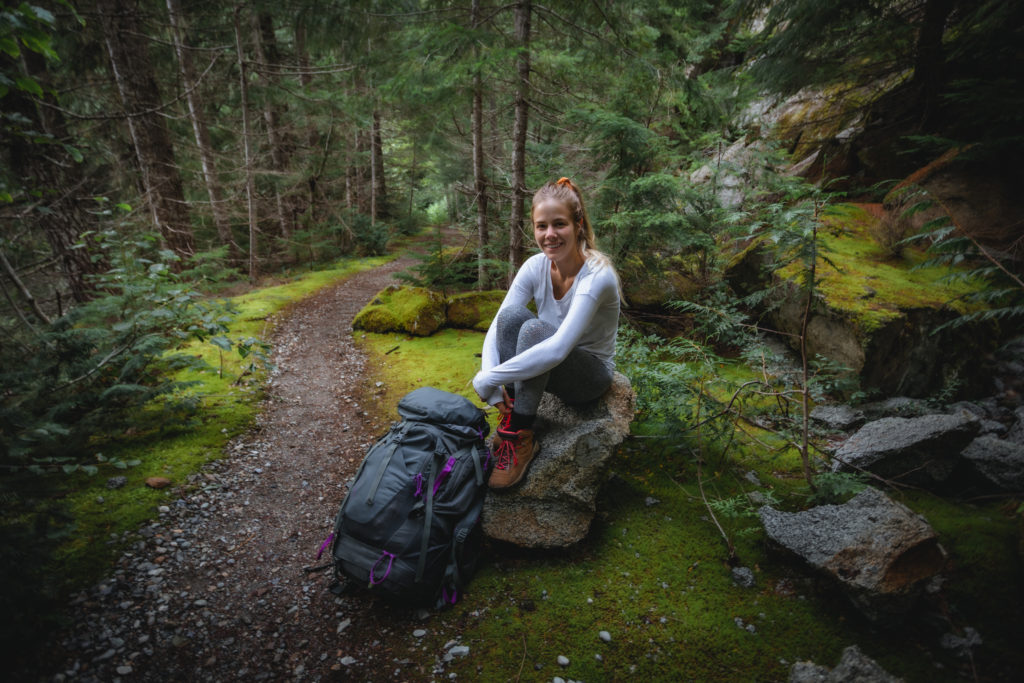
Your time in the backcountry is limited to the dates on your permit. With your permit comes a tag to display in your vehicle while it’s parked at the trailhead overnight. If for any reason you don’t plan on following through with the itinerary printed on your permit, be sure to let the rangers know you’re canceling so they can open the site up to another group. There are no refunds for canceling.
While you don’t need your permit visible during your hike in Glacier, you must display it on your tent if you leave camp at any time. Your printed backcountry permit will have pertinent information about your campsite like if there is a water source for filtering and if fires are permitted.
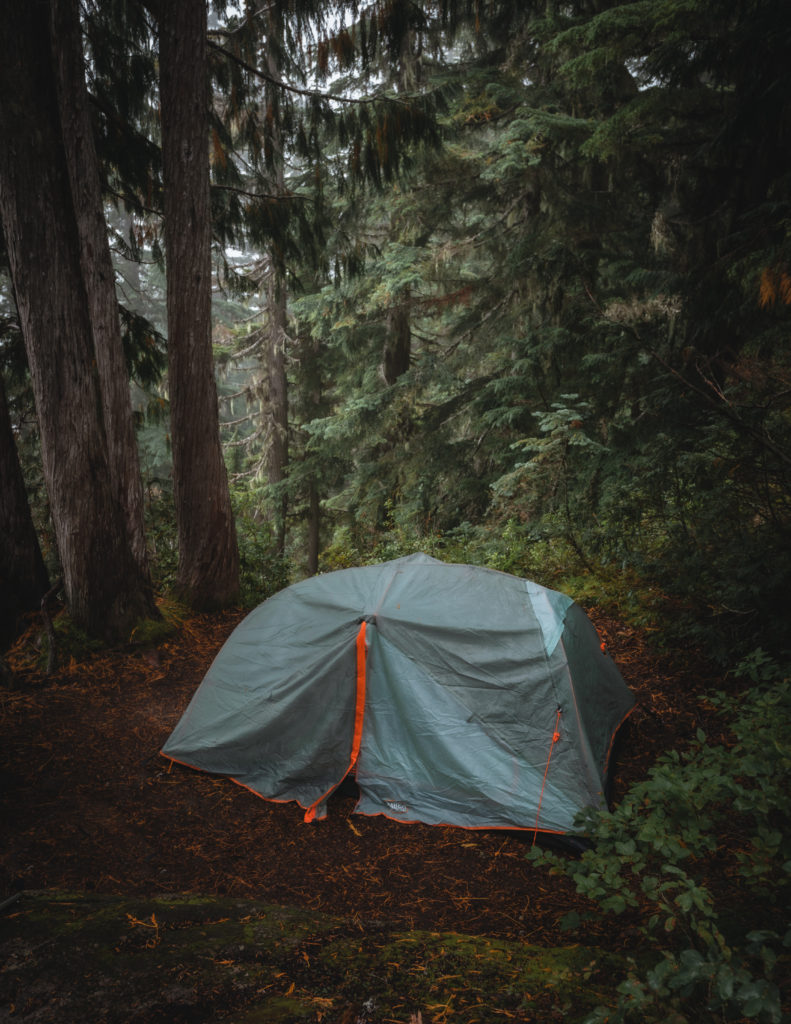
Arriving to Your Backcountry Site
Glacier has some of the nicest backcountry sites I’ve been to. As soon as you arrive to camp, a posting with a map lays out exactly where you can find the food storage/prep area, the pit toilet and the 3-4 campsites. Upon arrival to the sites, the very first thing to do is to store your food immediately, along with any scented items like deodorant, toothpaste, hand sanitizer or feminine products. Some sites have actual bear containers but some only have a pole. If that’s the case, you must hang the packs containing these items with your own ropes.
After securing your food and scented items, follow the mapped guide to find the campsites. The sites are first-come-first-serve so choose another if one is already taken. I always go with the site that’s either more photogenic (hello, blogger!) or the one that’s closer to the water.
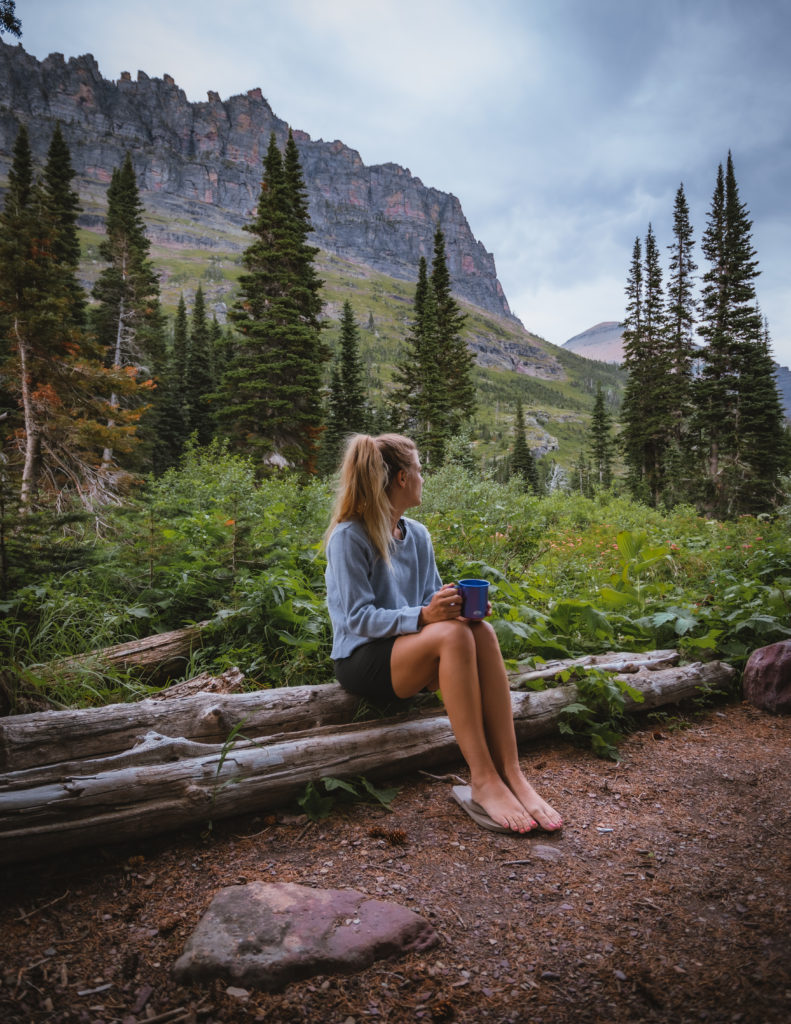
Protocol Within the Backcountry Sites
As mentioned, the first thing you do when you arrive to your site is to secure away food and scented items to not attract bears and other wildlife. These items must stay hung up or in the bear container for the duration of your stay.
When preparing food, remove exactly what you will need from the secured pack and then instantly put it away. Be sure you are only eating your meals in the food prep area and do not take any snacks or leftovers back with you to your tent.
Always use the pit toilets! Even if it’s 2 in the morning, you must make the trek to the pit toilet. Wildlife can smell the salts in urine so they will dig up soil to find it, thus ruining the vegetation. While most pit toilets in Glacier are privately covered they do smell pretty bad! Be sure to pack out any used toilet paper or feminine products.
If you’re unfamiliar with the basic guidelines to follow in the backcountry, read my blog post about the 7 Rules of the Backcountry here.
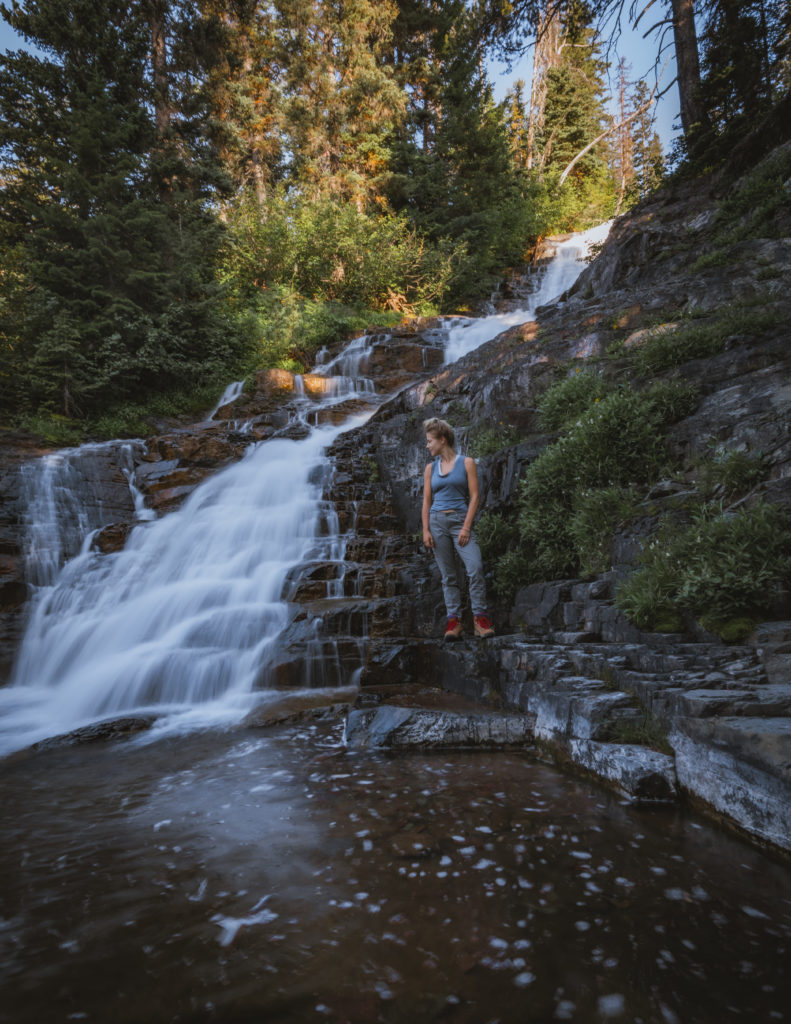
Like This Post? Pin It!
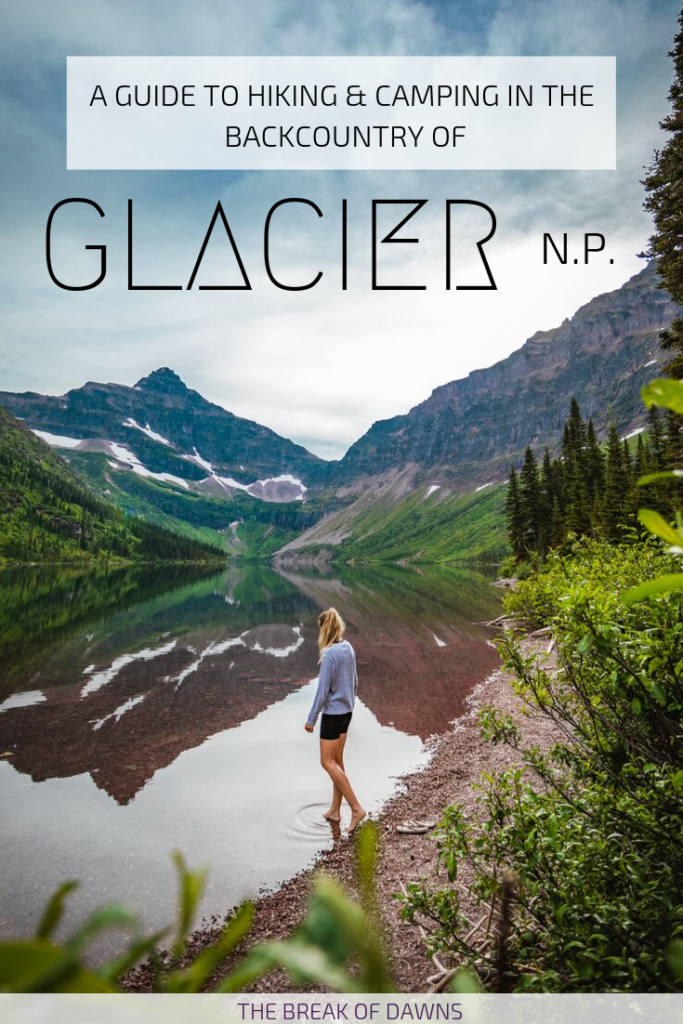

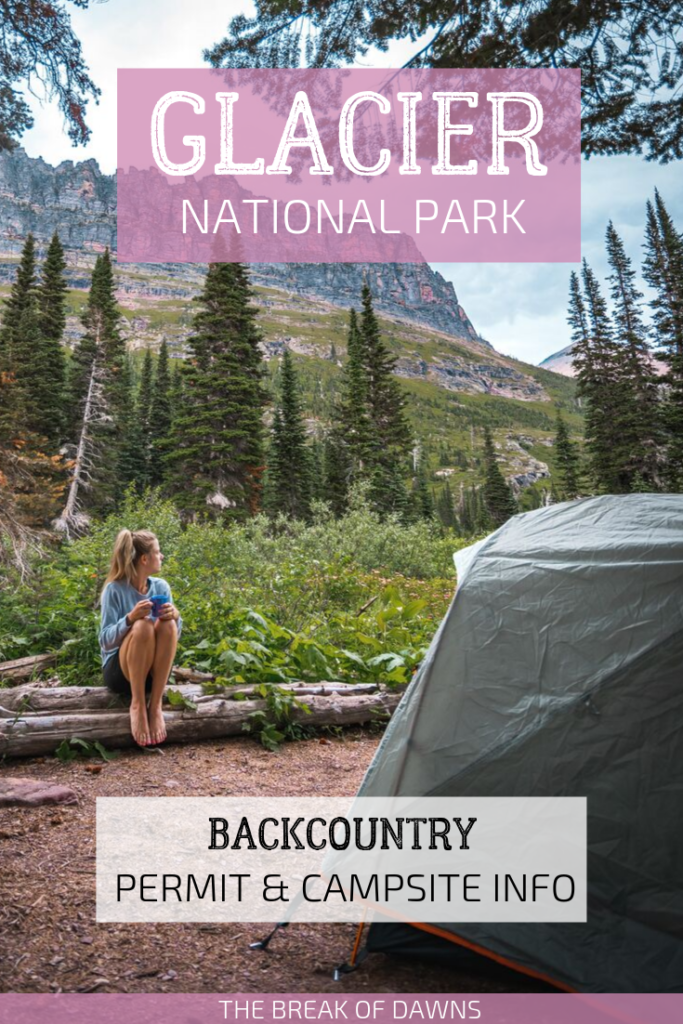
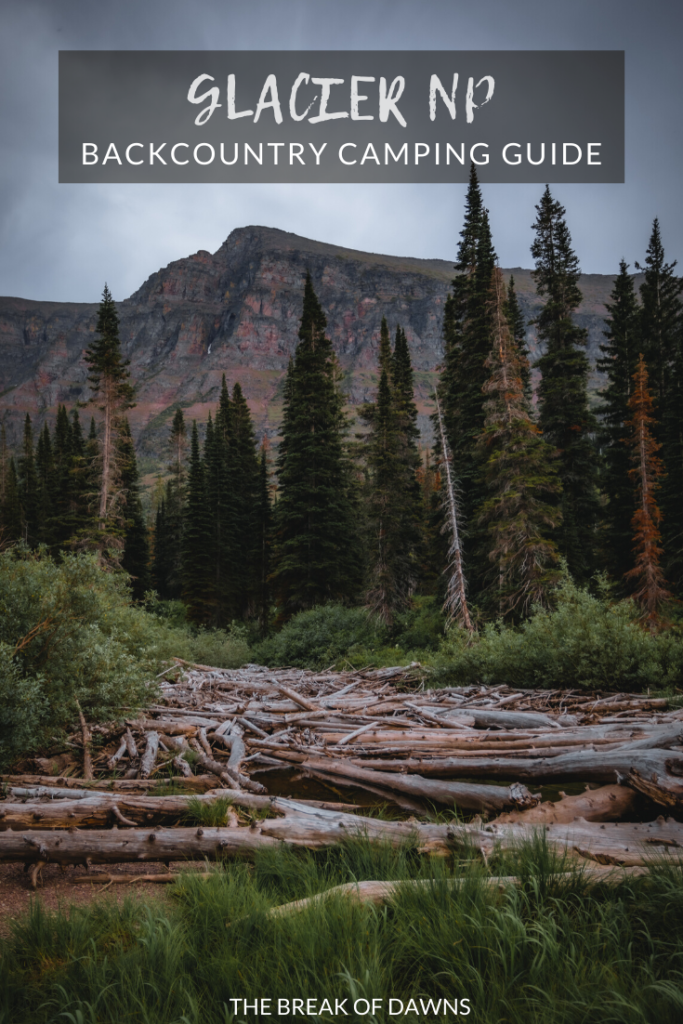
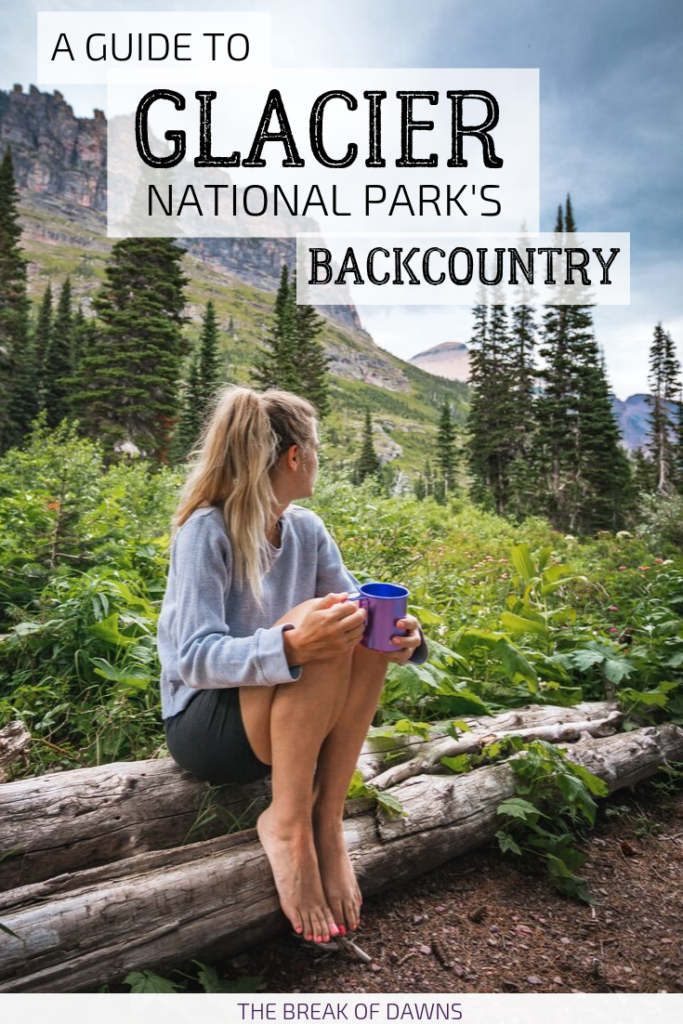
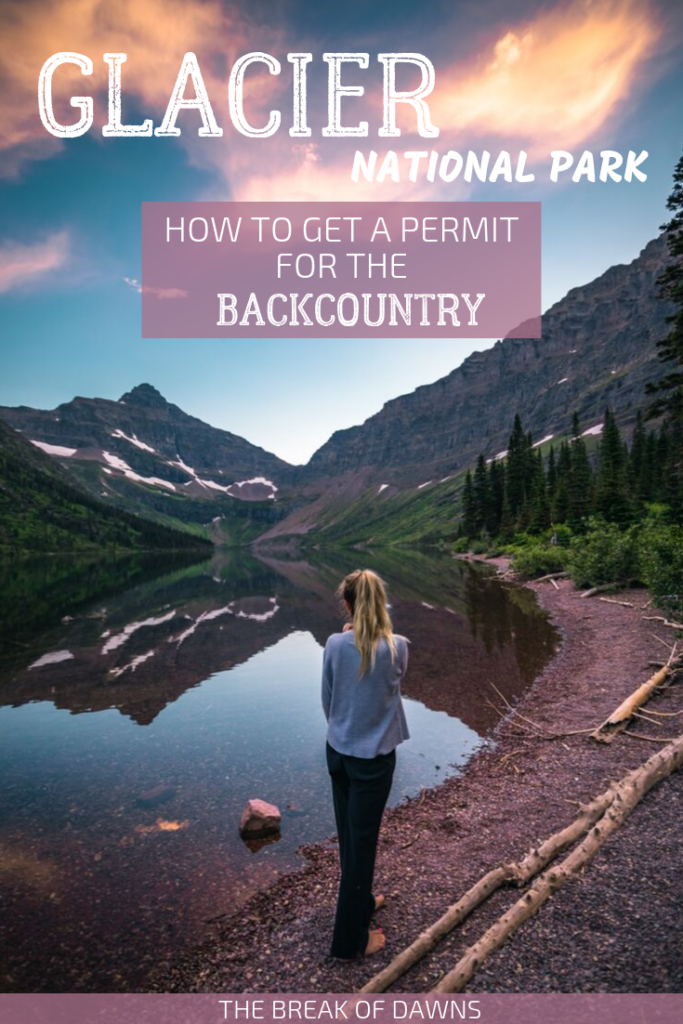
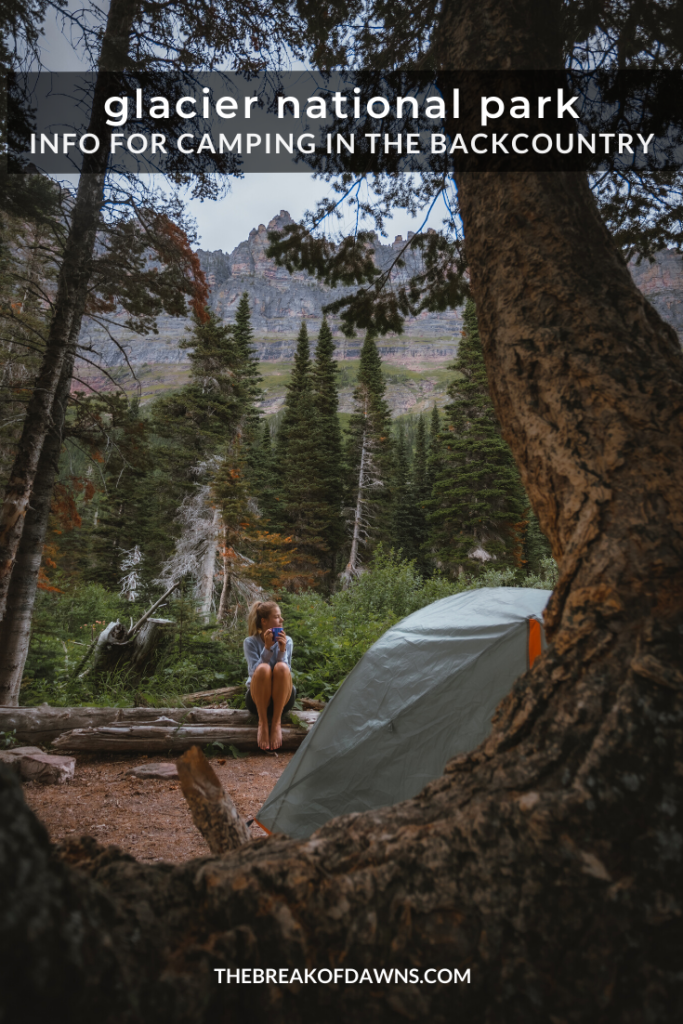
| This post contains affiliate links which means that, at no extra cost to you, if you purchase one of these products I may receive a small commission. This helps me maintain my blog as a free space to you. Check out my Disclaimer for more info.

